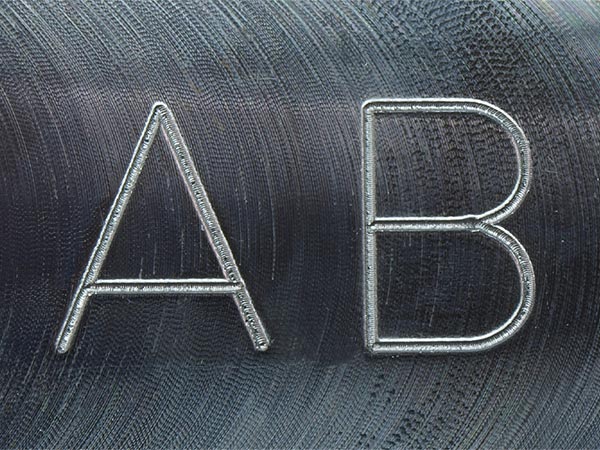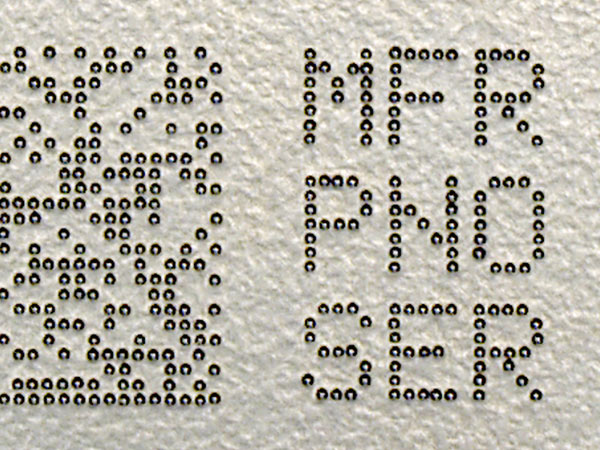
Vibro Peen Marking
Technique: Vibro marking involves a vibrating tool with a “peen” or stylus that rapidly impacts the surface. The vibration creates a series of overlapping indentations rather than discrete dots. Some specifications may refer to this method as Vibration Peen Mechanical or Vibro Peen Controlled.
Mechanism: The vibration causes the peen to make rapid, small impacts on the surface, creating a more continuous mark. This process can produce both text and logos. Most often, it is a manual hand-held operation with no programming. The mark’s quality can depend on the operator, leading to production bottlenecks.
Applications: Similar to dot peen marking, vibro peen marking creates permanent marks on metal and other materials. It’s particularly useful for marking large areas or hard-to-fixture components. It is typically a legacy call-out for aerospace, military, or government components.
Advantages: Hand-held vibro tools cover larger areas more quickly and can be useful for marking uneven or curved surfaces. The continuous marking can also be more resistant to wear in some cases. Easy to use and high-speed.
Disadvantages: Inconsistent depth, poor legibility, and inconsistent size are typical. It is not considered a low-stress mark. Some machine configurations do not offer control of the number of dots in the character.

Dot Peen Marking
Technique: Dot peen marking uses a pneumatically or electrically driven stylus (or “peen”) that strikes the surface to create a series of small, uniform, and discrete dots. The dots are arranged to form characters, logos, patterns, or matrix codes.
Mechanism: The tool moves in a controlled pattern to produce the dots, which are typically of a consistent size and spacing. The depth and density of the dots can be adjusted depending on the material and the required mark.
Applications: This method is commonly used for marking serial numbers, barcodes, and other identifying information on metals, plastics, and other materials. It’s often used in industrial settings for part identification and traceability.
Advantages: Provides high readability, predictable and consistent marks, especially for alphanumeric text and complex designs. Program templates can be set with more opportunities for integration into ERP systems or automated production cells. The marks are generally durable and resistant to wear.
Disadvantages: Equipment can be a higher cost. Set up of templates required.
In Short…
Dot Peen: Creates discrete dots that form characters or designs; suitable for high precision and clear text; common in industrial part marking.
Vibropeen: Uses continuous vibration to create overlapping indentations; suitable for larger areas or uneven surfaces; can produce a fast mark.
Each method has its strengths and is chosen based on the specific requirements of the marking job, such as the type of material, the desired appearance, and the durability needed.
